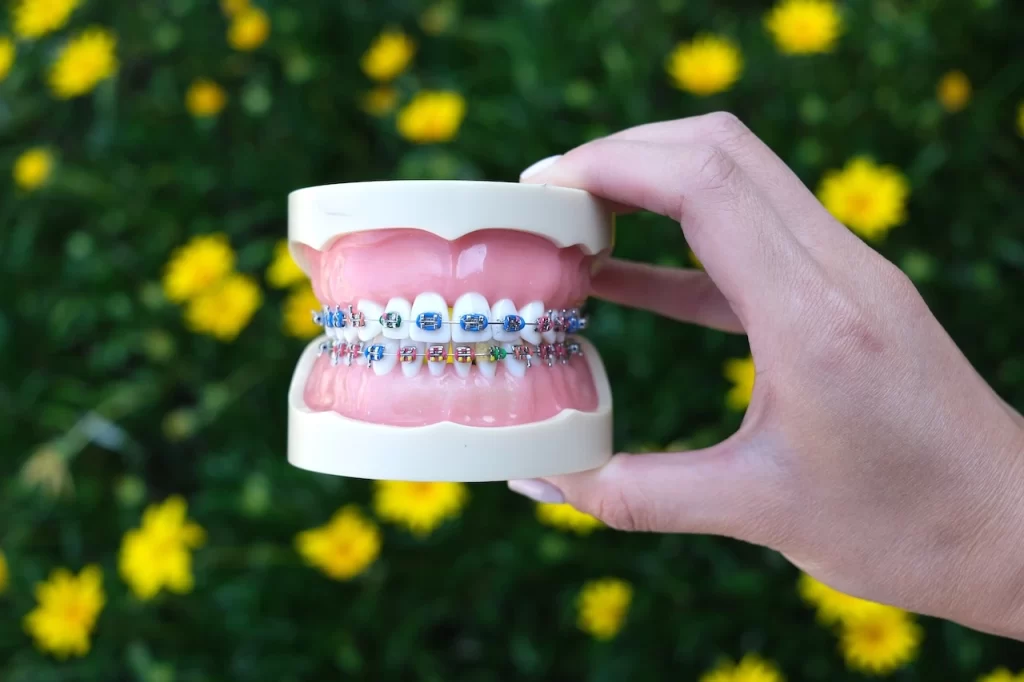LEARN THE DIFFERENCES
Braces vs. Invisalign: What’s the Best for Me?

Choosing between braces and Invisalign is one of the most common decisions families face when considering orthodontic treatment. Both methods are designed to move teeth into better alignment, improve bite function, and create a healthier smile—but the mechanics, maintenance, and lifestyle impact of each option can differ significantly. Understanding these differences can help patients and parents make a more informed choice that aligns with their goals, needs, and daily routines.
Traditional Braces
Traditional braces use a system of brackets, wires, and sometimes rubber bands to gradually guide the teeth into proper alignment. The brackets are bonded to the teeth and connected by an archwire that is periodically tightened or adjusted by the orthodontist. Braces can be made from metal or ceramic materials, with ceramic being less visible and often chosen by older teens or adults who want a more discreet appearance.
Braces have come a long way over the years. While they still use metal or ceramic brackets and wires to gradually move teeth, today’s designs are smaller, smoother, and more comfortable than what many parents may remember from their own experience. Braces are often the go-to choice for younger patients or for cases that require more complex movement—like significant crowding, bite correction, or rotating teeth that are out of alignment. One of the benefits of braces is that they stay on the teeth 24/7, which means there’s no risk of forgetting to wear them.
Braces are especially effective for treating more complex orthodontic issues. These may include significant crowding, spacing, deep overbites, open bites, crossbites, and rotated teeth. Because they apply continuous pressure and don’t rely on patient compliance, braces can be a reliable option for younger children and adolescents who may not yet have the maturity or routine to manage removable appliances. In early orthodontic treatment (Phase 1), braces can also assist with guiding jaw development in growing children, making room for permanent teeth or correcting certain skeletal imbalances.
Invisalign
Invisalign, in contrast, works through a series of clear, plastic aligners that are custom-fitted to the patient’s teeth using digital scans and treatment software. Each aligner is worn for about one to two weeks before being replaced with the next in the series, gradually shifting the teeth according to a predetermined treatment plan. Invisalign aligners are nearly invisible when worn, making them a popular choice for adults and older teens who are concerned about aesthetics.
The ability to remove the aligners is both a benefit and a responsibility. Patients can eat normally, brush and floss with ease, and take the aligners out for special occasions like photos, presentations, or social events. However, the effectiveness of Invisalign depends heavily on consistent wear—ideally 20 to 22 hours a day. Patients who frequently forget to wear their aligners or leave them out for long stretches may experience delayed progress or suboptimal results.
From a clinical standpoint, Invisalign has expanded its capabilities significantly over the past decade. With the help of attachments (small, tooth-colored shapes bonded to the teeth) and elastics, Invisalign can now address many of the same bite issues traditionally treated with braces. However, there are still certain cases—especially those involving complex tooth movements or jaw discrepancies—where braces may offer more control and predictability.
In terms of comfort, many patients find Invisalign less irritating to the cheeks and lips, since it doesn’t involve wires or brackets. That said, both treatments can cause mild soreness when teeth are actively moving, especially at the start of a new aligner or adjustment appointment.
Other Considerations
Hygiene is another consideration. Braces require extra attention to brushing and flossing, as food particles and plaque can accumulate around the brackets and wires. Special tools, like floss threaders or water flossers, may help. Invisalign, being removable, allows for normal brushing and flossing routines, which can be a major advantage for patients who are prone to cavities or gum sensitivity.
Ultimately, the decision between braces and Invisalign isn’t just about personal preference—it should be guided by a professional evaluation of your (or your child’s) bite, age, treatment goals, and ability to maintain good habits. In many cases, both options are viable, and the choice comes down to what best fits into your life.
There’s no one-size-fits-all answer, and that’s okay. Every smile is different. Some patients may benefit more from the precision and control that braces offer, while others may prioritize the flexibility and subtlety of clear aligners. In many cases, both options can lead to great results—it’s just a matter of matching the treatment to the individual.
If you’re trying to decide between braces and Invisalign for yourself or your child, the best place to start is a conversation with an orthodontist. A thoughtful, personalized evaluation can help clarify which treatment makes the most sense, not only for dental needs but also for everyday life.
Braces vs. Invisalign: Quick Comparison
| Feature | Braces | Invisalign |
|---|---|---|
| Visibility | Visible (metal/ceramic) | Virtually invisible |
| Removable? | No | Yes |
| Food Restrictions | Yes | None |
| Oral Hygiene | More challenging | Easier to brush and floss |
| Comfort | Some initial irritation | Smooth, but may cause pressure |
| Appointment Frequency | 4–6 weeks | 6–10 weeks (with virtual check-ins) |


